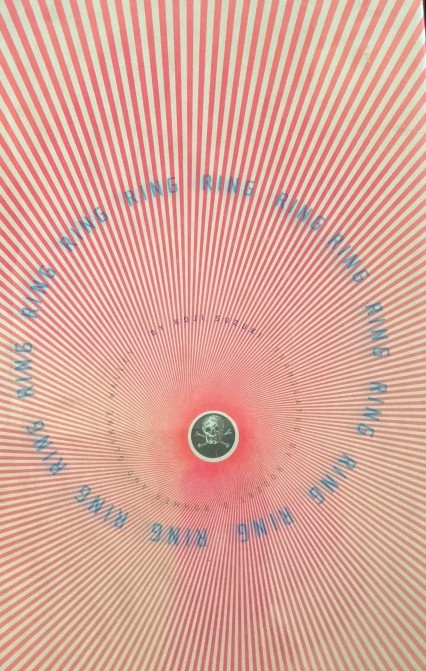Inspiring Older Readers
 posted on 21 Sep 2025
posted on 21 Sep 2025
Ring by Koji Suzuki
Suzuki’s 1991 horror/thriller, Ring, is. I think, one that can justifiably be thought of as a cult success. The sales of the book show how word-of-mouth recommendations and the power of Hollywood (who picked this up and turned it into a film franchise) can ignite sales - which doubled over a ten-year period. Suzuki went on to turn the story into a trilogy but it’s really this first one that lovers of this genre will be most immediately aware of.
I have to admit that I came to this book with a degree of ambivalence. On one hand I am he fan of modern Japanese novels in translation and go out of my way to read experimentally but, counterbalancing that, I’m not very keen on full-on, explicit horror or supernatural thrillers: I’m generally more likely to accept the suspension of disbelief in a movie but I’m a bit more intransigent when it comes to novels.
I slipped very easily into the book which starts with a really intriguing set-up: a jobbing journalist, Kazuyuki Asakawa finds himself increasingly obsessed by the case of the simultaneous deaths of four older teenagers who die from massive heart attacks. One of these deaths is a relative of Asakawa’s and he feels he needs to investigate how four seemingly unconnected youngsters can die in this way at pretty much the exact same time.
He decides that there must be a link between them and he discovers that the four had in fact met-up together to spend time at a holiday park where they seem to have all watched a video cassette that has no title. Asakawa himself watches the film and finds the content both mysterious and disturbingly violent – although it’s impossible to understand if it’s completely surreal or has a hidden narrative. The cassette ends with a statement:
"The one who saw these images is destined to die in one week at this time. If you do not wish to die, do as will be said from now on. That is—"
But there it ends – the final section of the video tape appears to have been recorded over with a clip from an unrelated television programme. Asakawa feels a sense of doom and decides he must find out what he was supposed to do to prevent his own death. He recruits his disturbingly odd friend Ryuji Takayama to help and he too watches the video. Now both are doomed and have just one week to find out what this mysterious video is all about.
And this might be taken as the end of the first part of the book and a suitably uneasy and spooky atmosphere has been generated. As we then launch into the second half, the focus is on the unfolding of the solution – which you just know is going to be an uneasy journey.
This is essentially where I’m going to stop telling you anything about the plot, for a couple of reasons: those of you who like the horror/mystery genre will not want any spoilers; but it’s also the point at which my commitment to the book began to slide away. It’s not a problem of the quality of the writing – which remained pretty high throughout - but a problem with the increasingly unlikely and convoluted plotline that resolves the mystery. I referred earlier to my struggles to sustain a suspension of disbelief for things supernatural in literature and this lies at the root of my increasing desire to just sigh and shake my head as the horror intensifies.
Ultimately, the solution is far less than the sum of its parts in my view and - of course - there has to be some part of it that's left open-ended in order that sequals can follow. But I'm happy that I read it for the first half alone which was, I thought, a top class piece of scene setting; however, I sort of wish I'd stopped at that point becuaes the not-knowing was far better than the over-engineered solution we're given.
What I am sure about is that if you like a horror story in your books, this one is unlikely to let you down. Copies of the book can be found in paperback easily enough but the hardback is a bit expensive, especially in its first edition.
Terry Potter
September 2025